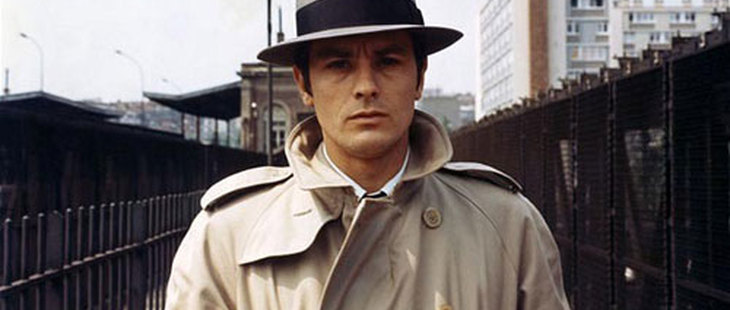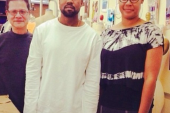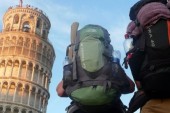
The trench coat and Macintosh are classic garments that never seem to go out of style, ideal for fall and spring, both in town and country. It was a Scottish chemist by the name of Charles Macintosh who in 1823 invented a simple single-breasted long rubberized coat, which by the early 1850’s had influenced both Thomas Burberry and Aquascutum (Latin for watershield) to produce their own water-resistant versions made from tightly woven gabardine. Both brands still argue as to who was the first to make the trench coat, but they quickly realized that the military would be their biggest clients; in 1901 Burberry was commissioned by the War Office to create a gabardine coat known as the Tielocken for officers of the British Army. By the outbreak of the First World War the ‘watershield’ had become known as the trench coat and an optional item of clothing for British and Canadian army officers, often obtained on private purchase (lowlier ranks had to wear heavy woolen serge greatcoats). Military historian Mike Chappel writes in his book The British Army of World War I – The Western Front 1914-1916, that “officers acquired an extraordinary range of commercial protective clothing for wearing in the trenches including made-to-measure trench coats, riding macs, trench-caps and trench-boots and it became fashionable to buy shirts, ties, coats and breeches in the very palest hue of khaki, a shade closer to pink than fawn.” Mark R.Henry notes in The US Army of World War I that once the United States entered the war, American officers “soon retired their double-breasted drab wool overcoats in favour of Burberry trenchcoats.” In consultation with his tailor or Burberry itself, an officer could decide on a number of potential modifications including a removable belt, D-rings, storm patch (both front and back) and epaulettes. In the 1918 October issue of Vanity Fair, a month before Armistice, a short article promoted the waterproof trench coat “for the well dressed man in service.” It advertised that the double-breasted coat with slashed pockets, wrist straps and oil silk interlining had “stood the acid test of service on the British front and would afford complete protection, even under the most trying conditions of trench or open field.” Except for bullets, artillery and mustard gas that is. The sad truth is thousands of well-dressed officers were killed and buried in their Burberrys. It was when the surviving veterans returned home to civilian life at the end of 1918 that the coats became popular amongst the aristocratic hunting set, foreign correspondents and gents in the city. By WWII, Allied and Axis countries had their own versions of the trench coat and riding mac. Typical designs ranged from ten-buttoned, double-breasted to half-length five button windbreakers in a range of colours from tan, khaki, beige, black and camouflage. Fabrics also varied, the leather versions favoured by tanks regiments, motorbike dispatch riders and, of course, the Third Reich, who loved their leather garments. After the war the coats, whether double-breasted trenches or flat-fronted macs, became staple garment for men, depending on one’s activity worn with a flat cap, bowler hat, wide brimmed fedora or trilby–a look made popular by film noir movies of the 40’s and the likes of Humphrey Bogart. This iconic film-noir wardrobe was widely copied by directors and stars of the 1960s French New Wave, particularly as seen in the crime films of Jean Pierre Melville. Melville’s moody male anti-heroes nearly always wore trench coasts with belts tied firmly; from Jean Paul Belmondo in Les Doulos, to Alain Delon in Le Samourai and Le Cercle Rouge. Donald Sutherland sported a whiskey resistant macintosh in The Eagle Has Landed and his co-star Michael Caine wore a classic trench in the Harry Palmer film series (The Ipcress File, Funeral in Berlin). Peter Sellers chose a double-breasted design with belt, storm flaps and epaulettes for his trademark look as Inspector Clouseau in The Pink Panther films, and Jacque Tati’s Monsiur Hulot character in Mon Oncle wouldn’t be complete without his mac (okay, Hulot wasn’t exactly a sexy would-be spy, but how nice to imagine). By the end of the sixties, when formal fashion was replaced with more relaxed styles, the men’s raincoat was rescued when Steve McQueen in Bullit wore a style of Mac called a balmacaan–a knee-length loose flaring overcoat with raglan sleeves. And then who could forget Columbo–although perhaps it was Peter Falk’s grubby detective character that inspired a few flashers to adopt the Mackintosh. The trench coat and Mackintosh have long been worn and appreciated by women as well. Marlene Dietrich managed to carry off the traditional male garment in the 1948 classic A Foreign Affair. Over time Sophia Lauren, Bridgette Bardot, Audrey Hepburn, Catherine Deneuve, Jane Birkin and Jackie O have all belted up and done their bit in promoting a Spring/Fall look with style and sexiness, perhaps accessorized with a head scarf and dark glasses. Today the likes of Kate Moss, Kate Middleton and Birkin daughters Lou Doillon and Charlotte Gainsbourg adopt the same look with timeless style. While the trench coat has never really fallen from favour in Europe, thanks to Burberry and Aquascutum, in North America it comes and goes. And now it would seem it’s come round again. This season a whole slew of clothiers are offering their own versions of the classic trench for men and women, including Paul Smith, Marc Jacobs, Diesel, H&M and Yigal Azroue. As for the 180-year-old Mackintosh label, which has previously worked with Herms and Cline, it was bought in 2007 by Tokyo firm Yagi Tsusho, which also owns Barbour. Production is still based in the UK, out of a solitary factory in Cumbernauld, but the brand has recently been experiencing a renaissance. So much so they have brought on Royal College of Art star designer Erdem Moralioglu, with the aim of reestablishing themselves as a British luxury brand. Customers can now search the company’s archives and choose from 372 detail combinations, depending on what type of look and cut they wish. For something cheaper yet highly functional, there are a number of companies such as Schipperfabrik and What Price Glory that produce faithful historical reproductions for battle re-enactment groups, including such items as an American Army trench coat. And should you fancy testing out your Burberry heritage double-breasted raglan on the pretend battle field with other grown men, there might be some of them who will snigger at your wardrobe choice–but they’d be dead wrong. __ Ed Wilkinson-Latham is a Senior Editor at Toronto Standard.




























